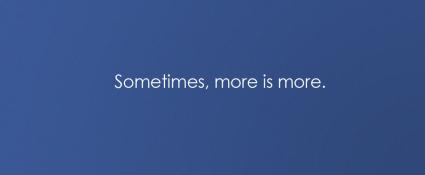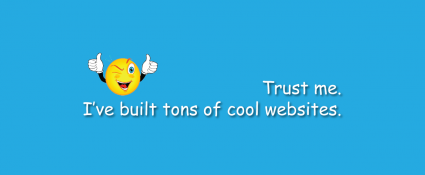
When trying to market yourself online, you have the ability to demonstrate yourself as a credible source. What's interesting is how many people and companies don't maximize this opportunity that Al Gore built for us online.
There are some key components that every website should contain. If your website doesn't include these elements, then you are missing out on opportunities.
What is especially amazing is how many web designers and marketers don't have these basic elements on their websites.
Phone Number Clearly Visible
For this, we'll make the assumption that you want to talk to your customers. Some companies have the business model that they don't like to talk to their customers. It's those same companies that invariably someone will complain about their lack of customer service.
If you want to sell things to your clients, you should have your phone number prominent and obvious. Make it easy for people to get a hold of you. Yes, people are utilizing chat, social media and email more and more, but most people still want to have a phone number.
Contact Page That Makes Sense
A contact page should also contain your phone number. Personally, I believe your contact page should also have your physical address. It adds credibility to your outfit.
I know that sometimes you want to work out of your home. But, let's face it, no matter how much play working remotely gets in the news, it's just not as professional. It causes a flicker of thought of, "Oh, you can't afford an office?"
If you don't have a physical address, you should at least get a virtual office and an address. It's a great place to meet your clients away from your home. It's okay to work out of your home but you should have an address away from home as a business location and a virtual office is a very inexpensive way to do that.
Incidentally, you should also meet your vendors at your virtual office. They are a great source of leads if they understand you are truly a professional.
About Page
I'm amazed how frequently I don't see an about page on a website. I want to do a little research about you. I want to understand your background. I want to know if you are a company or an individual.
Most people are okay with the fact that you might be a solo operator. People want to know who you are and how you do it. It becomes very disingenuous to try to hide or obscure your company history or makeup. If you pretend you are bigger than you really are then people will begin to wonder what else you are hiding.
Your about link doesn't have to be a prominent link in your main navigation but you should have a link so people can learn more about your company. They need to know you are real and not some fly by night operation.
The format of your about page can be a simple history and philosophy or can go so far as to include employee biographies. The more you give your prospective clients, the more you'll be able to connect with people in a real way.
Clear Call To Action
Oh, how often this is forgotten. When I come to your website, I want you to tell me what I should be doing there. I need to know what your expectation is for me. If you don't tell me then I won't do it.
The sales performance of your website should be considered the sales performance of a sales person. You should read my previous post, "How to Sell to Me," so that you can understand a little more what I mean. If you treat your website as a sales person and not a thing then you might do a little better building it.
Blog, Blog, Blog
You need to demonstrate your brilliance and ability. You do this by being active on your website with updated content. If you have a constantly changing product offering then this is less important. If your website would otherwise be pretty stagnant, an updated blog will make all the difference.
When your website doesn’t have a change in a very long time it signals to your clients that you don't care. You don't care about giving information that is helpful. You don't care about getting your message out. In turn, it means you may not be attentive to them.
Oh, and don't forget, when you blog often, you are also setting yourself up for long term search engine success.
Don't Be Embarrassed
I know that often times the goal is to try to portray something that you are not. If you are tiny, you want people to think you are bigger than you are. I can appreciate that to a certain extent. I understand that if you are starting your consulting practice or design agency that you might not be able to afford a staff to help you out.
Stop trying to hide behind the lack of appropriate content but instead, double down on being more visible. Yes, it might take more hours. It might be hard work. But, if you aren't going to put in the work on your website (or hire it out - like my agency) then you probably don't deserve to be in business because you will set up doubts in your prospective clients' minds as to your ability to do what you say you can do.
Be proud of who you are. Proclaim it on your website and make it easy for your clients and prospective clients to find you.




